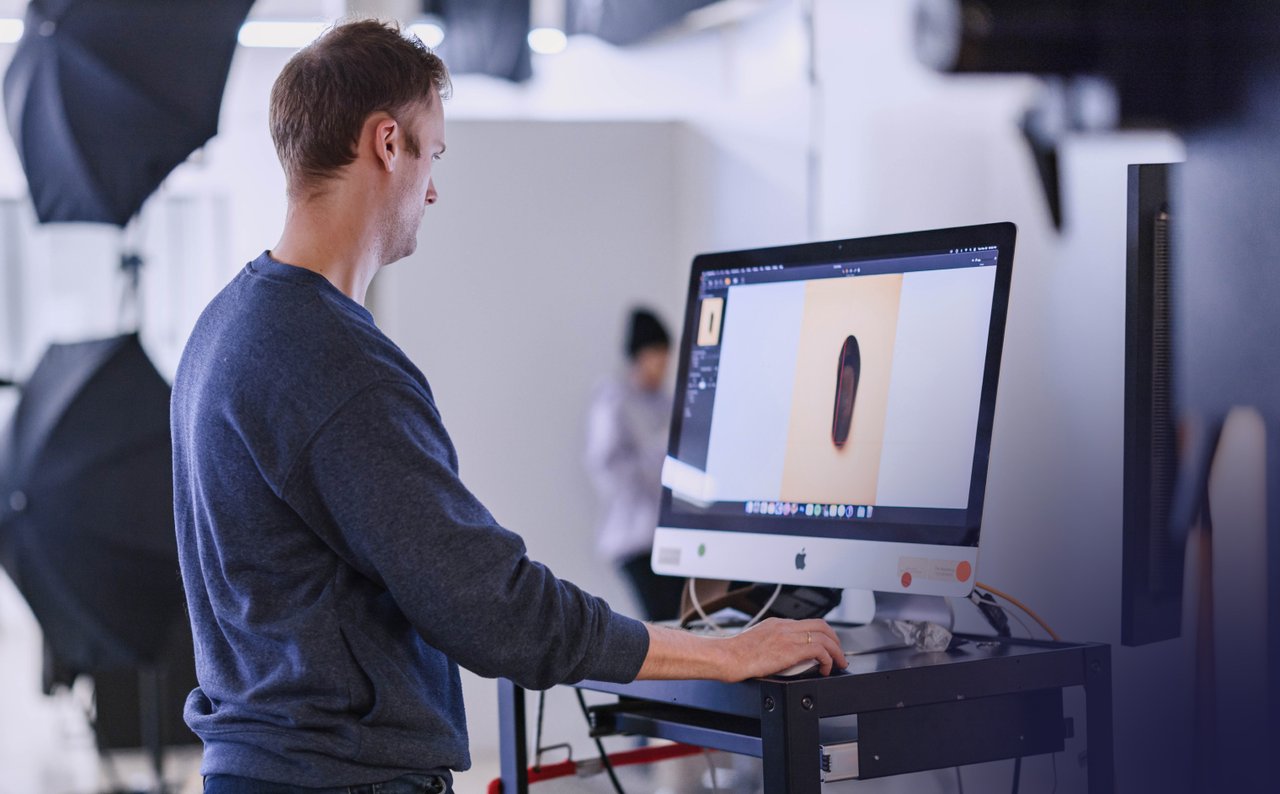Seamless Integrations: How to Connect Tools for Optimal Photo Studio Workflows
In this blog, we’ll talk about what to consider – and two scenarios to keep in mind when choosing between integrating various project management, scheduling, and communication tools to optimize your photo studio workflows.
We’ve discussed researching, testing, and choosing emerging tech for your studio. So how do you integrate it into your workflows?
Our very own Onboarding Specialist Adam Fedorowicz, formerly production manager at Bestseller Studios and Stylepit shares why seamless integrations are so important.
“Integrations between systems help to eliminate manual steps and as a result, the whole process becomes faster and more resistant to human error. The automatic exchange of information between systems also allows you to view data in real-time without the risk of some data being out of sync.”

First Step, Define Your Workflow
Before you can integrate anything or streamline your workflow, it's essential to understand what’s involved. A very simplified version of a photo studio workflow might include the following stages:
- Pre-production: Concept development, planning, sample management, hiring models, and gathering resources.
- Production: The actual photo shoot, including lighting setup, style and makeup, directing models, and capturing images.
- Post-production: Image selection, editing, retouching, quality control, and final delivery.
Understanding these stages and the tasks involved in each of them will help you identify which tools to integrate and - consider if you need them at all. Remember, it’s important to try things out, get demos, and see if they make sense for your studio.
The Importance of a Planning Tool
We also discussed this in our recent post, Emerging Technologies in eComm Photography and How to Choose the Right Software because it’s so important. When planning tools are integrated into your workflow they not only help facilitate project management, resource allocation, and progress monitoring for your team but they also streamline operations, enhancing overall efficiency.
Each step of the process connects directly to the next.
Planning tools can also play a pivotal role in supporting integrations by seamlessly blending with your other daily tools.
When choosing a planning tool, opt for one that provides a clear workflow view, encourages teamwork, and integrates effortlessly with your everyday tools, thus aiding in efficient and effective integrations.
Imagine using a planning tool that doesn’t integrate with the tools you use every day. In that case, you’ll have a completely separate system that doesn’t communicate with the other pieces of your organization, which will allow errors and miscommunication to continue.
Watch this space – Creative Force has a planning solution in the works and you’ll hear more in the coming months.
Integrations in a Perfect World
Integrations can be the best thing you do for your studio, allowing you to streamline each step of your workflow. When it’s working correctly, each platform flows seamlessly into the next step of the workflow.
- Pre-Production
Samples are tracked directly to shot lists, teams are scheduled, models and/or products are on the calendar and everyone knows exactly what to do and how to move forward when the shoot comes.
- Production and Post-Production
During the shoot, photos transfer from camera to computer, from computer to selects, from selects to editing and retouching, and into quality control and delivery without missing a beat.
Your integrated systems all communicate perfectly, and the teams can focus on their specific job because the files, schedule, style guide, and other needs are delivered to those who work on it when and where they need them. It all flows.
“The secret sauce to this whole setup,” says James Newman, Photo Studio Manager at Marmot, “is ensuring everyone involved stays accountable. Individual contributors generate the information that feeds whatever automation tools that are put in place, so there will always be a degree of troubleshooting and problem-solving. But that's all part of the charm of what we do.”
At the end of the day, we all need to remember that these integrations are people-powered, even in a perfect world.
Integrations in a Not-So-Perfect-World?
As much as we wish we lived in a perfect world, we have to keep in mind that things can go wrong.
- Pre Production
Simply put, if your integrations do not communicate with each other and pre-production communication isn’t delivered or delivered to the wrong place, information could be incorrect for the shoot, which could lead to a reshoot.
- Production
If files are misnamed, sent to the wrong place, misplaced completely, or stopped for one reason or another, the entire movement of the workflow stops.
- Post-production
This doesn’t even come into play if they never receive the files. This is why understanding the stages of production and making sure the integrations are truly connected is so important.
If it’s done correctly, it could be the best thing you do for your studio.
The Director of Key Account Management at Creative Force, Matthias Farenholtz says, “Integrations are essential for unlocking the full potential of any software or system.” he continues, “They allow different tools to work together seamlessly, eliminating the need for manual data entry and reducing errors, ultimately saving time and increasing productivity.”
Creative Force
When considering integrations, we have to give a quick paragraph to Creative Force. The platform integrates with dozens of the top software in the industry while ensuring that the studio workflow runs smoothly from ideation to delivery. These integrations allow users to continue using the software they love, all while having a single source of truth connecting it all and simplifying how it works together.
As always, the team is available to discuss how Creative Force integrates with your favorite software.
3 Closing Tips
Here are three things to remember when thinking about integrations:
- An optimal photo studio workflow lies in seamless integrations: Connecting your planning, project management, scheduling, communication, and other tools allows you to streamline your processes, reduce manual work, and focus more on what you do best: creating stunning photographs. But be wary - if there are hiccups in those connections, it could cause more harm than help.
- Every photo studio is unique: There's no one-size-fits-all solution. You may need to experiment with different tools and integrations to find what works best for your needs. Don't be afraid to try new tools, seek feedback from your team, and continually refine your workflow.
- Training is important: As you adopt these digital tools, ensure you and your team are well-versed in their functionalities. Consider conducting training sessions or sharing tutorial resources for the chosen tools. This will ensure everyone is on the same page and can leverage these tools to their full potential.
Wrap Up
In the end, the goal is to make your workflow not just efficient, but also enjoyable.
After all, a seamless workflow leads to less stress, more productivity, and ultimately, better creative output.
Want more best practices for studio managers? We’ve been sharing tips and tricks from our upcoming Studio Manager Playbook - check out some of our earlier guides on studio teamwork and digital tools for studios. We’ve collected these tried-and-true tips by speaking to eCommerce studio managers around the world - and we’d love to hear about your experiences with integrations, too! Drop us a line or let us know on Facebook, LinkedIn, or Twitter.










